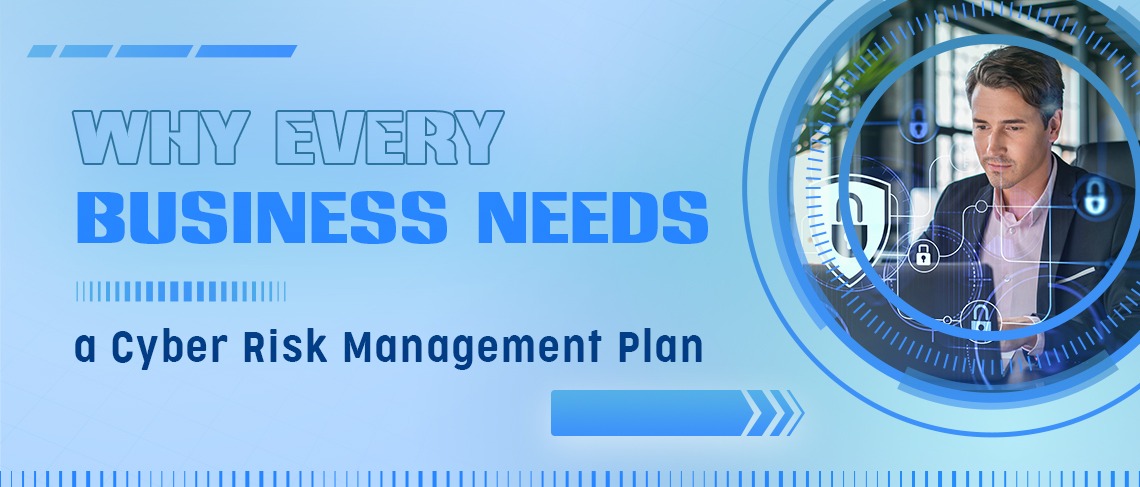Cybersecurity breaches are headline news nearly every day. From small businesses to global corporations, no organization is immune to the growing number of cyber threats. Whether it’s ransomware that locks down critical data or phishing scams targeting unsuspecting employees, the risks are real, and the stakes are high.
Understanding the unique risks your business faces and preparing to counter them proactively is no longer optional—it’s essential. This blog explores what cyber risks are, the key elements of a cyber risk management plan, how to implement one effectively, and the significant benefits it can bring to your organization.
If you’re ready to protect your data, reputation, and finances, read on to learn how you can build a comprehensive Cyber Risk Management Plan today.
Understanding Cyber Risks
Common Threats Businesses Face
Cyber risks come in various forms, and their impact can range from inconvenient to catastrophic. The most common threats include:
- Phishing Attacks: Fraudulent emails or messages that trick employees into revealing sensitive information like passwords or financial data.
- Ransomware: Malicious software that encrypts company data, holding it hostage until a ransom is paid.
- Data Breaches: Unauthorized access to sensitive customer or business data, causing reputational damage and potential legal action.
- Insider Threats: Malicious or careless actions from employees or contractors leading to data loss or exposure.
- Distributed Denial of Service (DDoS) Attacks: Overloading your company’s network to disrupt operations.
Vulnerabilities in Business Operations
Every business has digital weak spots. These can include outdated software, employees lacking cybersecurity training, improper password management, or insufficient security policies. Complex supply chains, particularly those relying on third-party vendors, can also magnify risks.
Companies that neglect these vulnerabilities leave themselves exposed to costly attacks—and the costs usually extend far beyond the immediate financial losses.
Key Components of a Cyber Risk Management Plan
A strong cybersecurity plan isn’t just a set-and-forget policy. Instead, it’s a dynamic process composed of several intertwined components.
1. Risk Assessment
A cyber risk management plan begins with assessing the risks your organization faces. Start by asking questions like:
- Which systems, data, and applications are most critical to your operations?
- What are the biggest vulnerabilities in your current IT setup?
- Who has access to sensitive information, and how is it protected?
Conduct a comprehensive audit that examines your physical hardware, internal networks, cloud services, and third-party vendors. Tools like penetration testing and vulnerability scanning can provide clarity and help quantify your risk.
2. Security Policies
With a clear understanding of the risks, it’s time to implement policies to mitigate them. Examples include:
- Employee training programs on recognizing phishing emails.
- Guidelines for setting secure passwords and avoiding password reuse.
- Policies on data encryption for sensitive files.
- Access control protocols restricting high-level data to authorized personnel only.
3. Incident Response Plan
A strong plan isn’t just about prevention; it’s also about knowing how to respond when something goes wrong. Outline exactly who does what in the event of a breach. The plan should define roles for IT staff, legal counsel, public relations, and management. Include clear steps for:
- Containing the breach (e.g., disconnecting infected devices).
- Notifying stakeholders and relevant authorities.
- Recovering encrypted or stolen data.
Implementing a Cyber Risk Management Plan
Building a plan from scratch might sound intimidating, but these steps will simplify the process:
Step 1: Start with a Governance Structure
Assign ownership of cybersecurity planning to a designated team or individual. They’ll be responsible for overseeing implementation and ensuring updates over time.
Step 2: Invest in Tools and Resources
Leverage modern cybersecurity tools, such as firewalls, antivirus software, and intrusion detection systems. Investigate advanced options like AI-powered threat detection if your budget allows.
Step 3: Educate Your Workforce
Your employees are the first—and often weakest—line of defense in combating cyber threats. Regular training should cover how to recognize phishing attempts, handle sensitive information, and report suspicious activity.
Step 4: Regularly Test the Plan
Simulate breaches and run drills to test and refine your organization’s incident response process. Doing so ensures your team is ready to react when real attacks occur.
Step 5: Partner with Experts
Not every business has the in-house expertise required to handle complex cybersecurity issues. Partnering with cybersecurity consultants or managed security service providers (MSSPs) ensures that your business has the support it needs.
Benefits of a Robust Cyber Risk Management Plan
Creating a cheap cybersecurity plan UAE isn’t just about avoiding threats—it’s about actively strengthening your business.
Protection of Sensitive Data
Leakage of customer or employee information can destroy trust, and in some cases, even result in legal penalties. A strong cyber plan ensures critical data isn’t easily compromised.
Avoidance of Financial Losses
Data breaches cost businesses an average of $4.45 million globally in 2023. By preemptively investing in strong cybersecurity measures, you’ll save significantly more money in the long run.
Preserving Your Reputation
A security breach that impacts your customers can permanently erode their trust in you. A robust security strategy minimizes risks and reassures stakeholders that you prioritize their safety.
Competitive Advantage
Businesses known for their cybersecurity diligence often gain trust faster, giving them an edge in highly competitive industries. Clients, particularly in sectors like fintech or healthcare, demand that their vendors meet high security standards.
Proactive Cybersecurity is Non-Negotiable
Cyber risks are an inevitable part of operating in the digital age, but their damage isn’t invincible. With a thoughtfully constructed cyber risk management plan, businesses can protect their assets, build trust with their customers, and even gain a competitive advantage.
However, implementing a cybersecurity plan isn’t a one-size-fits-all process—it requires tailoring to your unique business needs and a proactive mindset.



